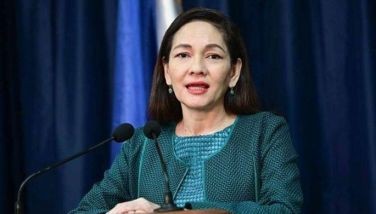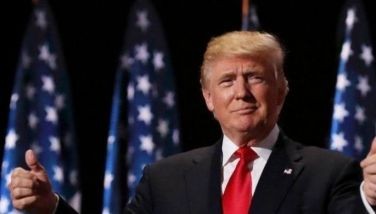11.2 M families rate themselves poor in 2015 – SWS
MANILA, Philippines – Around 11.2 million Filipino families remained poor in the last quarter of 2015, the latest survey of the Social Weather Stations (SWS) shows, but that number is the lowest since 2011.
Presidential spokesman Edwin Lacierda said the survey results are “in no doubt” proof that the country is heading toward a fully developed status.
He added that the numbers “encourage us in the administration to further maximize the country’s resources toward greater inclusivity.”
The survey, taken from Dec. 5 to 8, revealed that 50 percent of 1,200 respondents – equivalent to 11.2 million families, according to SWS – still rated themselves poor, similar to the 50 percent or 11 million in September.
The poll group said the steady self-rated poverty rate nationwide in the fourth quarter was due to a sharp decline in Mindanao, offset by increases in balance Luzon, Metro Manila and the Visayas.
Self-rated poverty fell by 19 points in Mindanao to 51 percent in December.
However, it went up eight points in balance Luzon to 46 percent, five points to 37 percent in Metro Manila, and five points to 71 percent in the Visayas.
The SWS noted, however, that last year’s 50 percent average self-rated poverty rate is four points below the 54 percent average of 2014, and was the lowest annual average since 2011’s 49 percent.
Results of the latest SWS poll were published in the newspaper BusinessWorld yesterday.
Food-poverty
The same survey also found 33 percent, about 7.4 million families, who rated themselves as “food-poor,” two points below the 35 percent or 7.8 million registered in September.
The two-point decline in food-poverty rate in December was due to a drop in Mindanao that was offset by an increase in the Visayas and steady rates in both Metro Manila and balance Luzon.
Self-rated food poverty fell by 13 points in Mindanao to 41 percent in December but rose in the Visayas by 10 points to 50 percent.
It hardly changed in Metro Manila at 21 percent and in balance Luzon at 26 percent.
Meanwhile, the SWS said the median self-rated poverty threshold – the lowest monthly home expense budget needed by the poorer half of poor households not to consider themselves as such – hit a record-high P20,000 in Metro Manila in December.
“The December 2015 median self-rated poverty threshold in Metro Manila is at the highest level ever reached in this area,” SWS noted.
The survey has sampling error margins of plus or minus three percentage points for national percentages and plus or minus six percentage points each for Metro Manila, balance Luzon, the Visayas and Mindanao.
Lacierda said the survey showed that the government’s efforts to uplift the lives of the poor are working.
“In the coming months, our agencies will remain hard at work promoting countrywide development and implementing programs that will truly benefit the people,” Lacierda promised.
He revealed that 7.5 million Filipinos have been “lifted above the poverty line” through the government’s flagship conditional cash transfer program of the Department of Social Welfare and Development.
Studies show that 1.5 million households, or about 7.5 million Filipinos, benefited from the program.
For his part, Presidential Communications Operations Office Secretary Herminio Coloma Jr. acknowledged the decrease in the number of Filipino families who considered themselves poor and “food-poor” at 50 percent and 33 percent, respectively.
“We note that the rating for self-rated hunger is the lowest since 2011 while the rating for self-rated food poverty is two percentage points lower than the 35 percent recorded in September last year (2015),” he said.
“The SWS survey validates the efficacy of the government’s purposive and targeted social protection and poverty alleviation programs, anchored on the expanded Pantawid Pamilyang Pilipino Program (4Ps) which have benefitted close to 4.4 households nationwide,” he said.
With barely five months remaining in office, Coloma said they are “committed to sustaining the momentum of social protection and social welfare programs through the delivery of basic education, skills training and universal healthcare that seeks to bring about the inclusion of all marginalized citizens in the mainstream of social opportunity.”
- Latest
- Trending





























